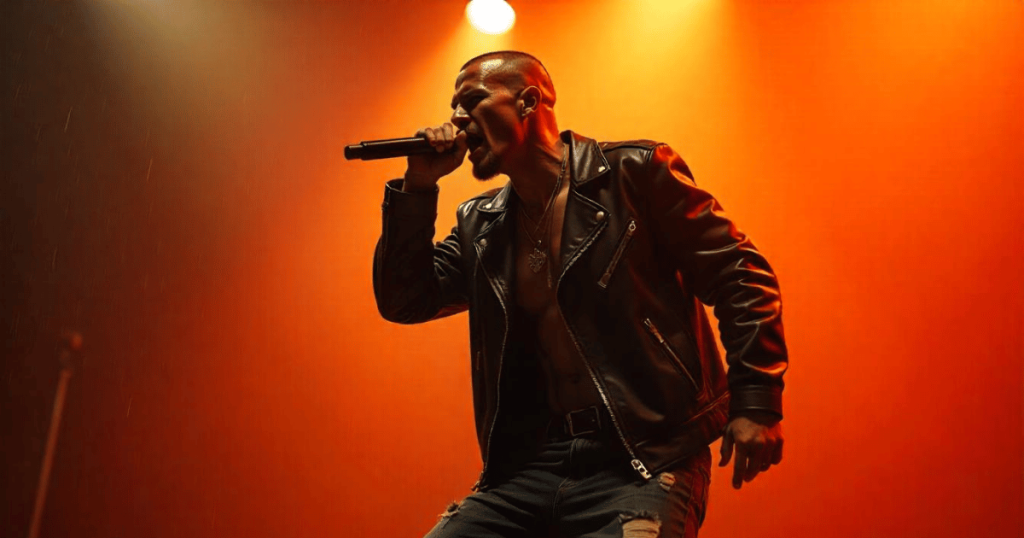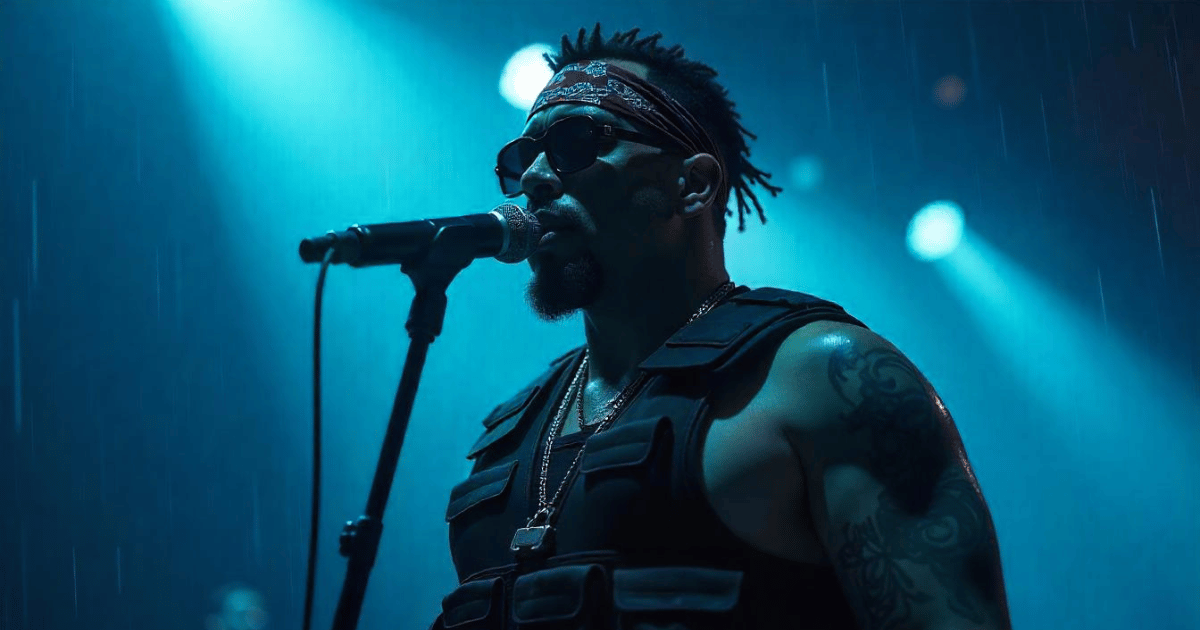Warning: This piece isn’t for the faint-hearted. It’s a raw, unvarnished exploration that shatters comfortable narratives. Read on if you’re ready for a deep dive into the gritty, unfiltered evolution of rap flow and delivery—where every syllable is a battle cry and every pause a declaration of intent.
It starts in the dark alleys of the city, in the smoky backrooms of underground cyphers, where a raw cadence flows as freely as spilled liquor and battered sneakers pound asphalt. There, amidst the clamor of revolution and rebellion, rap was born—a chaotic burst of creativity, a wordsmith’s rebellion against imposed order. Yet today, in our era of auto-tuned, algorithmically generated hooks, the question remains: How can I improve my rap flow and delivery?
I’m not here to spoon-feed you textbook definitions of “flow” or to kindly explain that it’s merely the rhythmic packaging of words. No, this is a journey—a plunge into the very soul of hip-hop’s heartbeat. It’s a call to arms for every aspiring MC who’s ever felt that their delivery is more “stutter” than “swagger.” Let’s dissect, challenge, and rebuild what it means to truly command the mic.
The Pulse of the Streets: A Symphony of Chaos and Craft
Imagine stepping into a room where the air vibrates with beats that mimic heartbeats—where every bar, every line, is a piece of your soul etched in sound. There’s a raw intensity here, a primal urgency. It’s not about perfection; it’s about expression. It’s about the clash between the mechanical and the soulful.
Flow, in its purest form, is the art of defiance.
It’s that defiant spit of a rebel who refuses to conform, who twists language like a street magician twisting fate. But the journey to achieving that “flow” isn’t a neat progression. It’s messy. It’s chaotic. It’s an ever-evolving battle between instinct and technique.

The real question: How do you harness that chaos and mold it into something uniquely yours? It begins with listening—the crackle of a boom bap record, the hypnotic pulse of trap drums, and the unmistakable echoes of legends who came before you. Every time you listen to that old vinyl or digital sample, you’re absorbing more than just sound. You’re inhaling history, culture, and a raw energy that refuses to be tamed.
Breaking Down the Anatomy of Flow
There’s no single formula—no magic algorithm to perfectly capture flow. It’s both art and science, intuition and technique. Think of it as a living, breathing organism. You don’t simply program a machine to be “rhythmic.” You train it, nurture it, and sometimes, you let it break free of the system entirely.
- Breath Control & Rhythm:
At its core, flow is about breath. It’s the delicate dance between inhaling life and exhaling art. Consider the greats—Nas, Tupac, Biggie—each line carefully punctuated by breaths that feel as intentional as punctuation in a novel. How do they do it? Through relentless practice, through repeated performance until the very act of breathing becomes a part of their delivery. - Cadence & Timing:
The cadence is the unique rhythm of your voice—your signature style. It’s what makes you instantly recognizable even before your name is dropped. Experiment with pauses, syncopation, and tempo changes. Play with your timing like a DJ scratching a record. Sometimes, the most powerful moments come not from what you say, but from what you leave unsaid. - Articulation & Clarity:
Even the rawest, most emotionally charged performance risks being lost in a jumble of slurred words if your articulation falters. But don’t mistake clarity for coldness. Your voice can be both precise and pulsating with emotion. - Emotional Inflection:
Rap isn’t just about reciting lines—it’s about making the listener feel every syllable. Think about how a slight change in tone can transform a verse from a monotone recital into a visceral experience. Emotion is the secret ingredient that separates a practiced flow from something that’s truly revolutionary.
The Underground Ethos: Tradition, Rebellion, and Evolution
Let’s face it: if you’re questioning your flow, you’re already part of a long lineage of MCs who dared to innovate. Hip-hop was built in the backrooms of block parties and in the gritty corners of urban struggle. Its pioneers didn’t follow any rulebook—they broke them. And today, in an era dominated by digital beats and hyper-polished production, the raw, unfiltered energy of the underground is more vital than ever.
But here’s the kicker: in chasing perfection, many new artists end up sanitizing their sound. They polish their words to a high gloss, strip away the grit, and in doing so, they risk losing the raw authenticity that made the genre explosive. The real rebellion in rap is to embrace imperfection. It’s to let your voice crack, your timing vary, your inflection explode with real emotion. Authenticity doesn’t come from a metronome—it comes from the heart.
Consider the paradox: the same tools designed to perfect your flow can also sterilize it. Auto-tune, sample loops, digital editing—they’re double-edged swords. They offer precision, but they can also smooth out the rough edges that make your delivery uniquely human. This is why the question isn’t merely technical—it’s philosophical. It’s about reclaiming your voice in a world that increasingly favors algorithmic perfection over human nuance.
Techniques That Break the Mold
So how do you truly improve your rap flow and delivery? It starts with experimentation. Challenge yourself. Try out different rhythms, vocal patterns, and even languages. Don’t be afraid to mimic the style of your heroes for a while—just don’t get trapped in imitation.
1. Practice with Unconventional Beats:
Instead of the standard 90 BPM, try rapping over beats that push your natural cadence. The dissonance forces you to adapt, to find new rhythms in unexpected places. Record yourself, listen back, and adjust. Let the beat dictate your flow, not the other way around.
2. Freestyle Daily:
Freestyling is the ultimate test of flow. It forces you to think on your feet, to find patterns in chaos. Even if you’re not a natural freestyler, practice is key. Over time, you’ll start noticing a smoother, more confident delivery.
3. Breath Control Drills:
Work on your breath control like you’d work on a marathon. Practice delivering long verses without gasping, using techniques borrowed from vocal training. Experiment with phrasing—learn where to pause, where to push, where to let your emotion breathe.
4. Record, Rewind, and Analyze:
There’s no substitute for self-critique. Record your verses, then listen to them critically. Is your timing off? Do you sound rushed in places? What’s the emotional cadence? Be brutally honest with yourself. Sometimes, you’ll need to throw away entire sections and start fresh.
5. Embrace Imperfection:
Yes, it sounds counterintuitive. But in a genre built on raw emotion, letting your imperfections shine can be your greatest asset. A slightly off-beat line or a cracked voice can add a layer of authenticity that perfectly polished delivery just can’t replicate.
Cultural Shifts and the Evolution of Rap Delivery
There’s no denying that the landscape of rap delivery has evolved dramatically over the decades. From the crisp, deliberate flow of early pioneers like Rakim to the rapid-fire cadence of modern artists like Kendrick Lamar and J. Cole, each era brings its own flavor. But with each evolution comes a set of contradictions:
- The Push for Speed vs. the Need for Clarity:
Modern rap often celebrates speed—rapid-fire delivery that seems to defy the limits of human articulation. Yet, with speed comes the risk of losing clarity and emotional depth. Some artists have found a balance; others have sacrificed one for the other. The question remains: where is the sweet spot between blistering pace and intelligible, meaningful content? - Digital Perfection vs. Human Imperfection:
In our digital age, where every beat is meticulously programmed and every vocal track edited to near-perfection, there’s a growing counterculture that prizes raw, unfiltered expression. The most celebrated rappers today are those who can deliver flawlessly while still maintaining a gritty, authentic edge. It’s a tightrope walk—and those who master it set themselves apart. - The Role of Emotion in Delivery:
Rap isn’t just about words on a beat—it’s about transmitting raw emotion. Yet, in the race to perfect flow, some artists lose sight of the passion behind the performance. The true art lies in delivering lyrics that make listeners feel every word, every pause, every breath. That emotional connection is the linchpin of a legendary performance.
Personal Anecdotes and the Human Element
Let’s get personal—because at the end of the day, rap is about lived experience. I remember watching a young MC in a dimly lit basement, his voice cracking and raw as he battled through a freestyle rap. His delivery wasn’t perfect—he stumbled over words, his flow was erratic—but there was something electrifying about the way he poured his heart out on that mic. It wasn’t just rap—it was a full-blown expression of his struggle, his triumph, his entire existence. That, my friends, is what improved rap flow is all about: turning your vulnerabilities into strengths, your imperfections into power.

There’s an irony here: the very flaws that many artists try to hide can be the secret sauce of their success. The huskiness of a voice weathered by life, the unexpected pause that punctuates a verse, the slight slur that adds character—these are the elements that resonate with audiences who crave authenticity. The battle is not just to rap fast or cleanly—it’s to rap true.
The Unpredictable Landscape of Modern Hip-Hop
Now, consider the environment we’re in today. The internet has democratized rap, giving voice to millions of aspiring MCs. But with that surge of talent comes a saturation of styles and voices. In this crowded space, standing out isn’t about following the trends—it’s about shattering them. You can’t simply mimic the mainstream; you have to break the mold.
The pressure to perform flawlessly on social media, where every post is a highlight reel, can be suffocating. Yet, true artistry often emerges from chaos. The gritty authenticity of a well-worn flow, the raw intensity of a live performance in a small club, these are the moments that define hip-hop. As digital perfection marches on, there’s a rebellious countercurrent—a resurgence of raw, unedited performance that harks back to the genre’s roots.
Technical Innovations and Their Impact on Delivery
It’s impossible to discuss modern rap delivery without acknowledging the role of technology. Auto-tune, beat-making software, and social media platforms have reshaped how artists create and share music. These tools offer unprecedented precision, but they also risk homogenizing the sound of rap.
On one hand, software like Ableton Live or FL Studio allows producers and rappers to experiment with new rhythms and effects, pushing the boundaries of traditional flow. On the other, the convenience of these tools sometimes encourages a “copy-paste” mentality—where innovation is sacrificed for speed. The challenge is to harness technology without letting it erode the raw, human element that makes rap music so powerful.
For many, the solution lies in striking a balance: using digital tools to enhance creativity rather than replace it. This is where improvisation and experimentation come into play. Practice freestyling with minimal production, record your raw, unedited takes, and then layer in the technology as a support rather than a crutch.
The Philosophical Underpinnings of Rap Flow Improvement
Let’s pivot for a moment—this isn’t merely about technical skill. It’s a philosophical inquiry into identity, culture, and expression. Rap flow is a metaphor for life’s rhythm: sometimes smooth, sometimes jagged, always unpredictable. Improving your delivery means embracing that unpredictability. It means understanding that every stumble is a step towards something greater.
Ask yourself: Who benefits when you over-polish your flow? Who gets left behind in the race for digital perfection? The true masters of rap know that authenticity isn’t manufactured—it’s earned through struggle, experience, and raw emotion. And while technology offers tools to refine your sound, it can never substitute for the fire in your soul.
A Call to Rebellion: Rejecting the Status Quo
This exploration isn’t about dismissing modern technology or trends—it’s about questioning the status quo. In a world where algorithms often dictate what’s “good” or “trendy,” the true artist must reclaim control over their voice. To improve your flow, you must dare to be different. Dare to be raw. Dare to let your imperfections shine.
There’s a fierce beauty in the unpolished, the spontaneous, the offbeat. Embrace it. Experiment. Fail. Learn. And above all, keep pushing the boundaries of what rap can be. Because in that relentless pursuit of self-expression, you might just find that your unique flow is the missing piece of hip-hop’s future.
Lets Look At Some Standout Examples
Case Study: The Evolution of Kendrick Lamar’s Flow
Kendrick Lamar isn’t just a rapper—he’s a storyteller whose flow evolved from the gritty narratives of Compton to the complex, layered deliveries on To Pimp a Butterfly. In his early work, Kendrick’s cadence was direct and raw, shaped by the live, unpredictable energy of his local cyphers. Over time, he refined his technique by experimenting with different breath control drills and varying his tempo mid-verse, creating a dynamic sound that resonates with both precision and emotional weight. This evolution wasn’t accidental—it was a product of rigorous self-critique, live performances, and a constant drive to push the boundaries of what rap delivery could be. For more real-life examples of how artists redefined their sound, check out our in-depth case studies on famous hip-hop artists here.
Example: Breath Control and Freestyling Techniques
Consider the technique of freestyle rap as a training ground. Many MCs, such as Juice WRLD before his rise to fame, would practice freestyling daily, recording their sessions, and then meticulously analyzing each line. Juice WRLD’s ability to improvise fluid verses under pressure came from a regimen of relentless practice that honed his breath control and rhythmic precision. This method is not only about reciting lyrics but learning to navigate unexpected pauses and shifts—a skill that any aspiring rapper can adopt. Freestyling isn’t just about improvisation—it’s a rigorous training ground. Learn more about the techniques behind freestyle rap beats in our ultimate guide here.
Juice Wrld Teaches How To Freestyle Rap In 3 Steps
Case Study: Missy Elliott’s Iconoclastic Delivery
Missy Elliott broke the mold with her unconventional, almost futuristic delivery. In her hit “Get Ur Freak On,” the beat itself felt like a conversation with the rapper—each syllable punctuating the track like a burst of creative defiance. Missy’s approach was to use her voice as an instrument, playing with pitch and pace in ways that defied traditional expectations. Her evolution was marked by constant experimentation: she worked with producers, sampled diverse musical styles, and never hesitated to let her voice crack with raw emotion. Her journey illustrates that improving rap flow is as much about embracing individuality as it is about technical mastery. Consider how Eminem’s relentless flow on ‘Rap God’ transforms a verse into a masterclass in timing and emotion. Dive deeper into that iconic delivery here.
Example: Recording and Self-Analysis
One practical method that many underground MCs employ is the iterative process of recording, listening back, and refining their verses. Take an independent artist like Open Mike Eagle, for instance. He records his freestyles and studio sessions, then critically evaluates his performance—identifying where his breath control falters or where his cadence could add more punch. By comparing early recordings with later ones, he can pinpoint improvements and adjust his technique accordingly. This “feedback loop” approach is a tried-and-true method that any rapper can implement to gradually improve their flow and delivery.
Bridging Technology and Authenticity: A Mixed Approach
Modern rap delivery isn’t solely about raw talent—it’s a fusion of old-school hustle and modern tech. Many artists now use apps and digital tools to simulate live cypher conditions. For example, a rising artist might record multiple freestyles with different tempos using a mobile app that tracks breathing and pace, then compare these takes to see which best captures the intended emotion. This blend of technology with traditional practice allows for precise adjustments while maintaining that human, unpredictable spark.
Real-World Application: Community Workshops and Cypher Battles
Look at grassroots initiatives like local cypher battles in cities like Atlanta and Chicago. These events aren’t just competitions—they’re open workshops where MCs exchange techniques, challenge each other, and collectively push the boundaries of their craft. Observing these battles, one sees how dynamic flow can transform a simple rhyme into a mesmerizing performance. It’s in these live environments where artists learn to adjust their delivery on the fly, adapt to different beats, and incorporate audience feedback in real time. Such real-world scenarios offer invaluable lessons that no studio session alone can replicate. The evolution of rap is more than technical mastery—it’s about embracing a diverse, dynamic culture. For a broader perspective on the changing face of rap, explore our comprehensive guide for aspiring artists here.
The Journey Continues
At the end of the day, improving your rap flow and delivery isn’t a destination—it’s a journey. It’s an ongoing battle between the perfection of technique and the raw truth of emotion. It’s about reinventing yourself with every verse and every bar. It’s about being unapologetically you in a world that constantly tries to mold you into someone else.
So, whether you’re just starting out or you’ve been in the game for years, remember this: your flow is your signature. It’s the sound of your story. And while the path may be fraught with challenges, every misstep is a lesson, every pause an opportunity.
Keep grinding, keep experimenting, and most importantly—keep it real. Because when you step up to the mic, you’re not just delivering a verse; you’re unleashing your soul onto the world. And that, my friends, is what makes rap eternal.
This isn’t a neat wrap-up—there’s no tidy conclusion here, just a promise that the journey of self-discovery and artistic evolution never ends. The culture is in constant flux, and your flow is the heartbeat of that rebellion. So go ahead, break the mold, and let your voice be heard.
